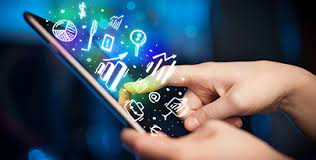Self-service changes with agents in service support
By Aditya Abeysinghe

 Self-service agents
Self-service agents
Self-service is use of a service without using human-based services. To use a service without humans, businesses usually create a component, an agent, such that users could obtain a service of a business. These components are coupled to a system where data from users are communicated with the system using a user interface. These agents usually use Artificial Intelligence (AI) to autonomously handle tasks. Therefore, in customer-oriented businesses most services are now provided using agents with the use of a simple user interface.
Advantages of self-service agents
A common use of self-service is to reduce queue time in customer service. Usually, customers have to wait until their service is provided. Customers who need quick service support may not wait for long waiting queues and they may use support from other service providers. With self-service agents, customers could service their request without waiting for agents to be allocated. Thus, better user experience for customers is ensured by self-servicing agents.
Self-service agents are also less costly for a business than human agents. Monthly maintenance costs, utility costs and costs for maintaining teams is reduced by changing customer servicing method from humans to self-service. Self-servicing may have costs during training and testing AI models, but over a period these costs are minimal as there are less costs for changes to agent models after adding them to a system.
Self-service is useful for a business as maintenance of data using agents is easier than that using humans. When data needs to be added and retrieved for support, humans need to manually update systems which is often time consuming. However, with self-service agents, data could be updated with lesser time as data is coupled to these agents using backend components. Therefore, humans could focus on more important services by delegating repetitive services to agents.
Change of customer support
Self-service agents are usually added in the form of bots to have live communication with customers. These bots use models to take user input and then process and provide output. Text only bots are the most common customer service used in businesses. These bots may show a list of possible inputs and customers may select a valid input and get a response from the bot. If the inputs do not match with the query of a customer, the communication may be transferred to a human agent. Advanced bots may use voice as an input to answer queries and often use several methods such as voice recognition, voice-to-text and text-to-voice conversion.
Self-service can also be used in online purchasing apps and websites. These apps and websites may use text input and offer a range of products to customers. Customers can then select a product and make self-service orders or reserve without interacting with human support. Customers can use the same service to change orders or reservations, track status of their order and provide ratings. This enhances buying patterns of a product as steps from product discovery to post-sales support can be handled in one flow.
Image courtesy: https://rounakdhillon619.medium.com/







